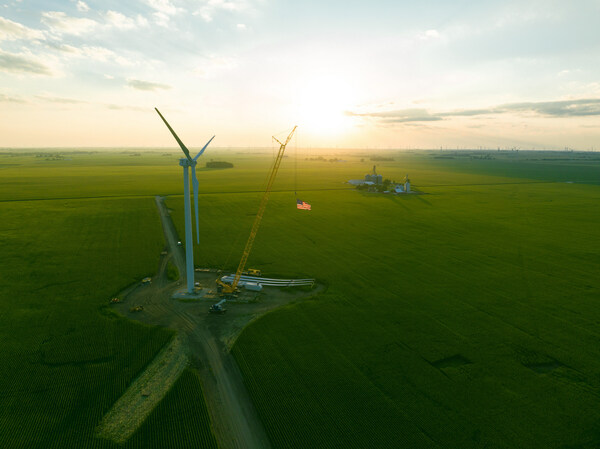bp Boosts Renewable Energy Production and Efficiency With Technology Upgrades at Indiana Wind Farm
bp (NYSE: BP) has completed a major technology upgrade at its Fowler Ridge 1 wind farm in northwest Indiana that will enable the site to produce more power, more efficiently and with greater reliability. The new Vestas turbines are expected to produce up to 40% more energy. They are estimated to generate an average of 314,000 kilowatt-hours each year, enough renewable electricity to potentially power around 27,000 homes. The new technology produces power more efficiently at lower wind speeds, creating more electricity from available wind resource.
"This project is a substantial upgrade for the wind farm and another investment in bp's low-carbon energy future," said Orlando Alvarez, chairman and president, bp America. "It shows bp's strategy in action – contributing to a more secure, affordable and lower carbon energy mix while pursuing our net zero ambition."
The project involved upgrading 40 turbines, including the installation of 120 individual blades and 40 new nacelles, which house power generation equipment and transformers atop the wind towers. bp's capital investment was around $100 million. The project meets bp's expected returns for renewables.
"We're excited to partner with bp as a leading multibrand service provider, supplying new, industry-leading technology for the Fowler Ridge 1 wind project," said Ramit Bajaj, senior vice president of construction & operations for Vestas North America. "Repowering wind projects offers an optimal solution for ageing fleets by increasing the annual energy production and expanding the lifespan of a project – a critical component of the clean energy transition."
bp plans to recycle the decommissioned blades, keeping up to 3.3 million pounds of material from ending up in landfills. The decommissioned blades are planned to be shredded and blended with raw materials to make cement products.
Onshore wind is critical to bp's renewables & power business, one of the company's five transition growth engines – the others are bioenergy, convenience, electric-vehicle charging and hydrogen.
bp | www.bp.com/us












